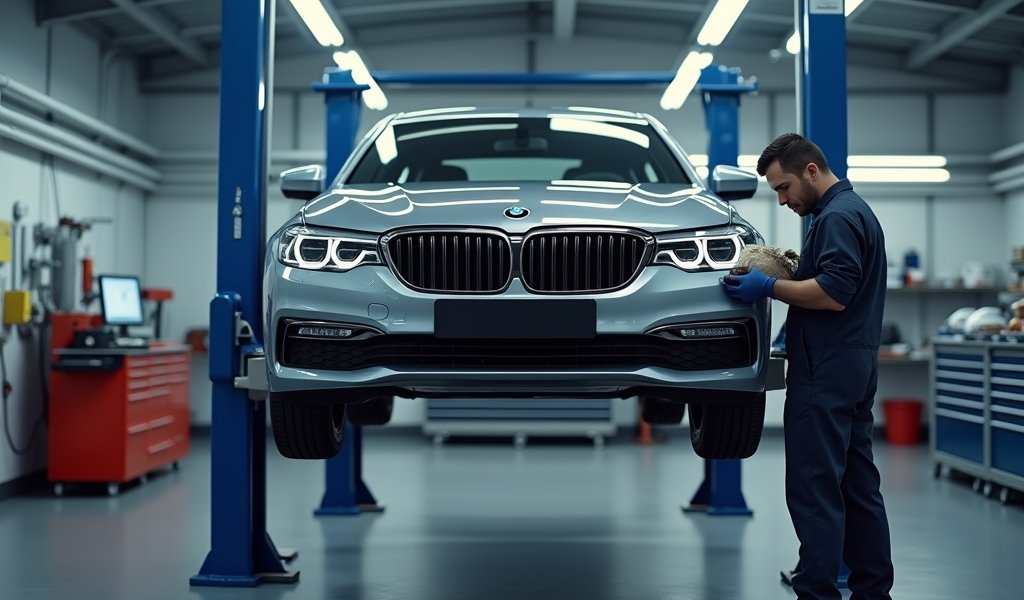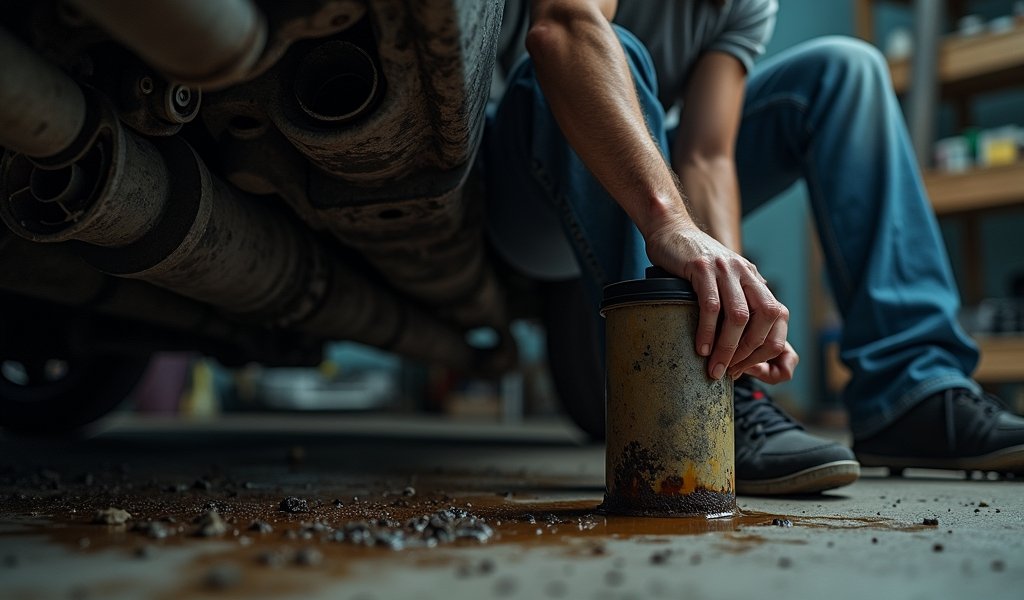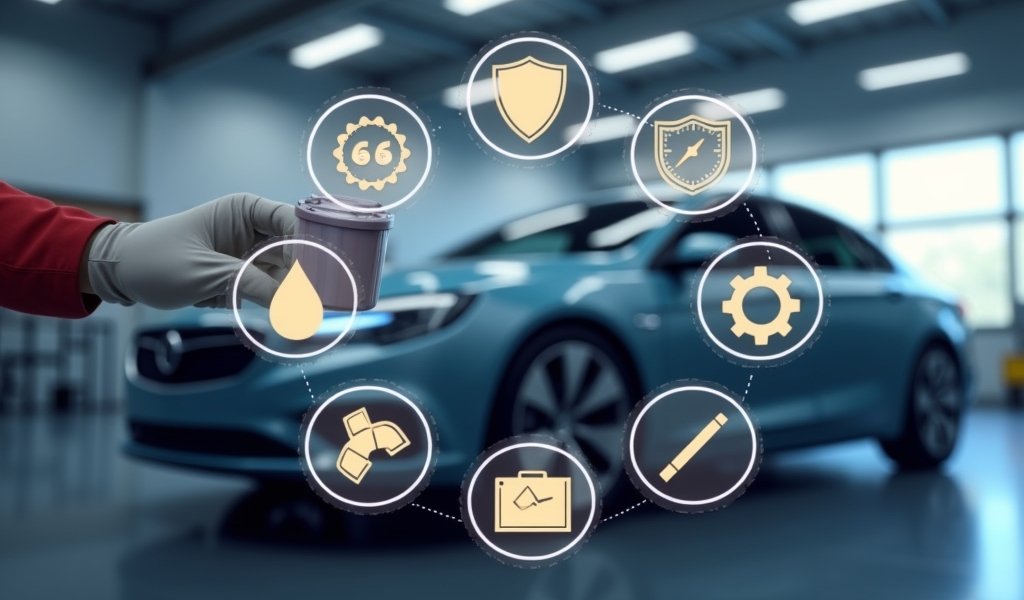Overview
This article provides detailed guidance on fuel filter maintenance, explaining that replacement intervals typically range from 30,000-100,000 miles depending on vehicle type and driving conditions, with signs of failure including decreased power, hard starting, and reduced fuel economy. It emphasizes that timely replacements prevent expensive damage to fuel system components and offers expert tips for maintenance, DIY replacement instructions, and cost considerations to help vehicle owners make informed decisions.
Table of Contents
- Understanding Fuel Filter Replacement Intervals
- The Importance of Timely Fuel Filter Replacements
- Signs Your Fuel Filter Might Be Failing
- Manufacturer Recommendations vs. Real-World Conditions
- 5 Expert Tips for Optimal Fuel Filter Maintenance
- DIY Fuel Filter Replacement: Step-by-Step Guide
- Cost Considerations for Fuel Filter Replacement
- Conclusion
- Frequently Asked Questions
Understanding Fuel Filter Replacement Intervals
The fuel filter replacement interval is one of those maintenance items that often gets overlooked until problems arise. As a mechanic with over 15 years in the field, I’ve seen firsthand how a neglected fuel filter can lead to poor engine performance, reduced fuel efficiency, and even complete system failure. Think of your fuel filter as your engine’s bouncer – it keeps the unwanted particles and contaminants from crashing your engine’s party.
Modern vehicles typically have fuel filter replacement intervals ranging from 30,000 to 100,000 miles depending on make, model, and driving conditions. However, these are just baseline recommendations. Your specific driving environment, fuel quality, and vehicle age all play crucial roles in determining when that filter needs changing.
Most newer vehicles have extended the replacement interval significantly compared to older models. While your grandfather might have changed his fuel filter every 10,000 miles, today’s advanced filtration systems and improved fuel quality have stretched these intervals considerably. But don’t let these longer intervals lull you into complacency – regular inspection is still essential.
The Importance of Timely Fuel Filter Replacements
Let’s talk about why the fuel filter replacement interval matters so much. Your vehicle’s fuel system is a closed network that requires clean, consistent fuel delivery to function properly. The filter is your first line of defense against contaminants that could damage expensive components like fuel injectors and pumps.
Over time, the filter collects dirt, rust particles, and other debris that find their way into your fuel tank. As this buildup increases, fuel flow becomes restricted – imagine trying to breathe through a straw stuffed with cotton. Your engine starts gasping for fuel, particularly during high-demand situations like acceleration or climbing hills.
Maintaining proper fuel filter replacement schedule prevents cascading problems. A clogged filter forces your fuel pump to work harder, potentially leading to premature failure. Since fuel pump replacements typically cost between $400-$1000 depending on your vehicle, that $20-50 filter starts looking like a bargain! Plus, clean fuel delivery means better combustion, improved fuel economy, and reduced emissions.

Signs Your Fuel Filter Might Be Failing
Your vehicle will usually give you several warning signs that the fuel filter is crying out for attention, well before you reach the manufacturer’s recommended fuel filter replacement interval. Being alert to these symptoms can save you from more expensive repairs down the road.
The most common indicator is a noticeable decrease in power, especially during acceleration or when climbing hills. This happens because your engine can’t get enough fuel when demand increases. You might feel like someone suddenly placed a governor on your vehicle – it just won’t respond like it used to.
Hard starting is another telltale sign. When your engine cranks longer than normal before firing up, especially on cold mornings, your fuel filter might be restricting flow. As the restriction worsens, you might experience random stalling or misfiring as the fuel supply becomes increasingly inconsistent.
Pay attention to your fuel economy too. A gradual decrease in miles per gallon could indicate that your engine is compensating for restricted fuel flow by adjusting its fuel mixture. According to EPA research on vehicle maintenance, addressing fuel delivery issues can improve efficiency by up to 4% in some vehicles.
The check engine light might also illuminate, often with codes related to “lean condition” or “fuel pressure” issues. Modern vehicles monitor fuel system performance constantly, and they’re pretty good at detecting when something’s amiss.
Manufacturer Recommendations vs. Real-World Conditions
While your owner’s manual provides a recommended fuel filter replacement interval, these guidelines assume ideal conditions. The reality of your driving environment might tell a different story. Manufacturer intervals typically range from 30,000 miles for older or performance vehicles to 100,000+ miles for many newer models with advanced filtration systems.
Real-world conditions require a more nuanced approach. If you frequently drive on dusty rural roads, use gas stations with questionable fuel quality, or live in areas with high humidity (which can lead to water contamination in fuel), you’ll likely need more frequent replacements. The same applies if you own an older vehicle that might have accumulated rust in the fuel tank.
Conversely, if you primarily drive on highways, use top-tier fuel, and live in an area with good fuel quality regulations, you might safely extend beyond the manufacturer’s interval. The key is understanding your specific circumstances and adjusting accordingly.
Many mechanics, myself included, often recommend a middle-ground approach for most drivers: inspect the fuel filter at regular service intervals after 30,000 miles, and replace based on condition rather than strictly adhering to mileage. This preventive strategy has saved many of my customers from unexpected breakdowns.
5 Expert Tips for Optimal Fuel Filter Maintenance
After working on thousands of vehicles over the years, I’ve developed some practical guidance on managing fuel filter replacement intervals. These tips will help you maximize both performance and the lifespan of your fuel system components:
- Know your vehicle’s specific interval: Different manufacturers have vastly different recommendations. Consult your owner’s manual or service booklet for the baseline interval, then adjust based on your driving conditions. Many European vehicles specify much longer intervals than domestic or Asian models.
- Consider your fuel source: If you regularly fill up at high-volume stations with fresh fuel turnover, your filter will likely last longer. Conversely, if you use rural stations with lower volume or older underground tanks, more frequent replacement may be necessary. According to the American Petroleum Institute, fuel quality can vary significantly between retailers.
- Replace preventively before long trips: If you’re approaching the 75% mark of your recommended interval and planning a long road trip, consider replacing the filter preemptively. The last thing you want is fuel delivery issues in an unfamiliar location, especially if you’ll be traveling through remote areas.
- Upgrade to high-quality filters: Not all replacement filters are created equal. OEM (Original Equipment Manufacturer) or premium aftermarket filters often use better filtration materials and have higher flow rates than budget options. The few extra dollars spent on quality can extend your effective interval.
- Coordinate with other services: Since many modern fuel filters are located near or integrated with the fuel pump assembly (often inside the fuel tank), labor costs can be significant. When possible, coordinate filter replacement with other services that require access to the same area, such as fuel pump replacement or fuel tank cleaning.

DIY Fuel Filter Replacement: Step-by-Step Guide
If you’re mechanically inclined, replacing an external fuel filter can be a manageable DIY project that saves labor costs. However, modern vehicles with in-tank filters require specialized tools and knowledge – those are best left to professionals. Here’s a simplified guide for external filter replacement:
Before beginning, ensure you have the correct replacement filter, appropriate wrenches, safety glasses, and rags or towels to catch fuel spillage. You’ll also need a way to relieve fuel system pressure, which varies by vehicle.
- Start with safety: Work in a well-ventilated area away from ignition sources. Disconnect the battery’s negative terminal to prevent electrical sparks. Have a fire extinguisher nearby – better safe than sorry!
- Relieve fuel system pressure: Consult your service manual for the proper procedure. This might involve removing the fuel pump fuse and running the engine until it stalls, or using a specialized valve on the fuel rail.
- Locate the filter: External filters are typically found along the fuel line under the vehicle or in the engine compartment. Some are mounted to the frame with brackets, while others are inline with the fuel lines.
- Remove the old filter: Place absorbent materials below to catch spillage. Depending on your vehicle, you’ll either disconnect quick-connect fittings or loosen threaded fittings. Mark which line is “in” and which is “out” – installing the new filter backward will cause immediate problems!
- Install the new filter: Make sure it’s oriented correctly (following the flow direction arrows) and securely mounted. Tighten connections to specifications without overtightening, which can damage fittings.
- Test the system: Reconnect the battery, turn the ignition to “on” position without starting the engine to pressurize the system, and check for leaks. If all looks good, start the engine and check again for leaks under pressure.
If you encounter significant resistance or specialized fittings, don’t force anything. ASE-certified professionals have the proper tools and experience to handle complex fuel system services without causing damage.
Cost Considerations for Fuel Filter Replacement
Understanding the economics of fuel filter replacement can help you budget appropriately and make informed decisions about maintenance. The costs vary widely based on filter type, vehicle make, and labor requirements.
For vehicles with external filters, parts typically range from $15 to $70 for OEM-quality replacements. Labor usually runs between $50-$150 depending on accessibility and your location’s labor rates. The total external filter replacement typically falls between $70-$220.
In-tank filters integrated with the fuel pump assembly are considerably more expensive, primarily due to labor costs. The filter itself might cost $20-$100, but labor can range from $200-$500 since it involves dropping the fuel tank or removing rear seats to access the pump assembly. Total costs often range from $250-$600.
Consider these expenses against the potential costs of neglect: a new fuel pump ($400-$1000+), fuel injector cleaning or replacement ($350-$850), and potential towing fees if you’re stranded. Regular filter maintenance, even at the higher end of the cost spectrum, typically proves more economical than dealing with the consequences of failure.
Conclusion
Maintaining proper fuel filter replacement intervals is one of those maintenance items that pays dividends in vehicle longevity and performance. While manufacturer guidelines provide a good starting point, your specific driving conditions and fuel quality should ultimately dictate your replacement schedule.
By paying attention to the warning signs of a failing filter and following our expert tips, you’ll avoid most fuel delivery problems before they escalate into expensive repairs. Whether you choose DIY replacement or professional service, the important thing is not to neglect this critical component.
Remember that the relatively modest cost of preventive filter replacement is always cheaper than dealing with the cascade of problems that can stem from restricted fuel flow. Your engine deserves clean, consistent fuel delivery – and you deserve a vehicle that performs reliably for years to come.
Frequently Asked Questions
How often should I replace my fuel filter?
Most manufacturers recommend replacement every 30,000-100,000 miles depending on your vehicle. Check your owner’s manual for the specific interval recommended for your make and model.
Can a bad fuel filter cause a check engine light?
Yes, a restricted fuel filter can trigger check engine lights related to fuel pressure or lean running conditions. Modern engine computers closely monitor fuel delivery parameters.
How much does it typically cost to replace a fuel filter?
External fuel filters typically cost $70-$220 including parts and labor. In-tank filters integrated with the fuel pump assembly can cost $250-$600 due to increased labor.
Can I drive with a clogged fuel filter?
While possible, driving with a severely clogged filter risks damaging your fuel pump and causing sudden stalling. It’s unsafe and not recommended for continued operation.
Are fuel filters different for diesel and gasoline engines?
Yes, diesel fuel filters are designed to trap smaller particles and often include water separators. Diesel systems typically require more robust filtration than gasoline systems.

